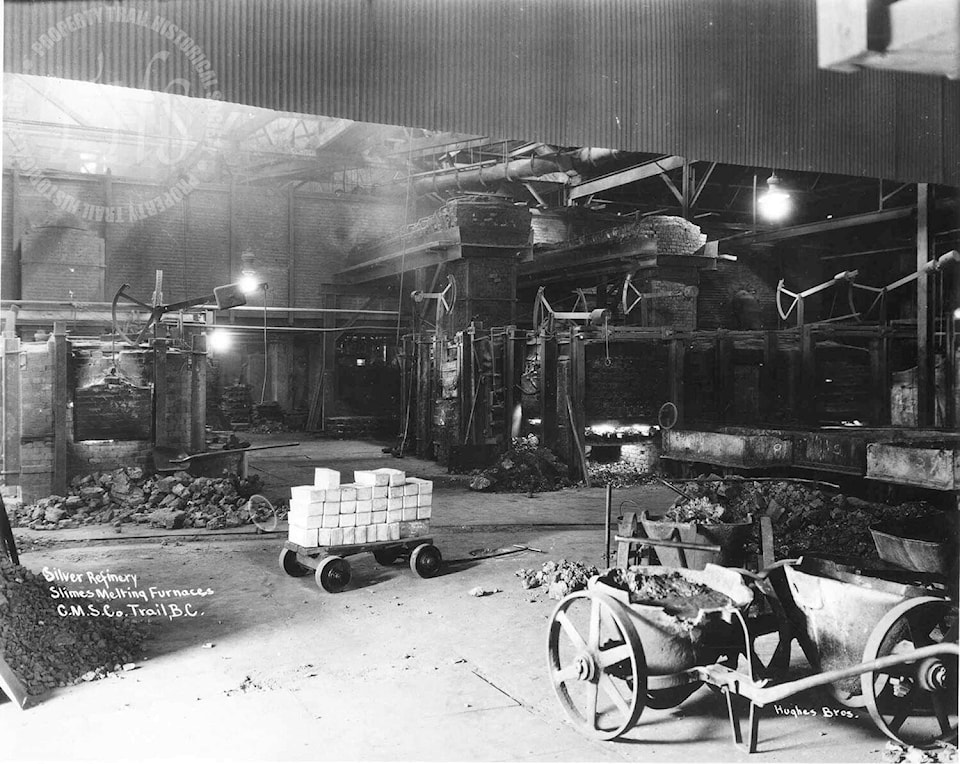Even though there will be no Silver City Days again this year celebrating all things Trail, looking back at why Trail is also known as “The Silver City,” is still very timely.
This Hughes photo from 1925 shows a snap shot of the slimes melting furnace in the silver refinery at the Trail smelter, now Teck Trail Operations. Almost 100 years later and the Trail plant is still refining silver, though using cleaner 21st century processes.
Silver, often a byproduct of mining for other metals, including gold, lead, copper and zinc, is commonly extracted from powdered ore by smelting or chemical leaching.
In 1925 a “peace silver dollar value” of extra fine quality was worth $32, or $37 in mint state.
Using an online inflation calendar, $32 in 1925 equates to $514.10 in 2022.
In hand with climbing inflation in the year 2022 comes the potential for the rising price of precious metals like silver.
According to the Silver Institute, “As the global economy recovers from the pandemic, expect to see silver demand rise from the industrial sector. Total global silver demand is forecast to climb by eight per cent to a record high of 1.112 billion ounces this year.”
As of press time, one ounce of silver was worth $31.88.
Read more: #LocalHistory stories
Read more: Sheri Regnier #LocalStories
newsroom@trailtimes.ca
Like us on Facebook and follow us on Twitter
